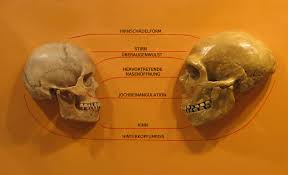A recent theory put forth by science is that people living in West Africa mated with an ancient human species that is now extinct. The contact with this ancient population is believed to have taken place 50,000 years ago.
There have been no startling fossil finds or any direct DNA evidence from the extinct population. Instead, scientists say the evidence lies in the DNA of contemporary West Africans.
Scientists analyzed samples of genetic material taken from a group of people living in Sierra Leon and Nigeria. They found signals from an ancestor who is yet unknown and has for now been named the “ghost ancestor.”
It is already documented that the current Homo Sapien species once shared territory with other humanoid types that shared common ancestry. There is also evidence that humans had sex with Neanderthals and other hominins.
Neantherdal DNA has been discovered in the human population, mainly among people of Asian and European descent. The Denisovans are another group of ancient hominins that mated with homo sapiens. The DNA of Denisovans can be found in people living in Oceania.
The information published in Science Advances regarding the “ghost DNA” only serves to further complicate an already blurred picture of how modern homo sapiens evolved away from other human species.
Sriram Sankararaman works at UCLA as a biologist. Sankararaman says the complexity of human evolution is obvious. The biologist also says that every once in awhile the scientific world receives a hint that reminds it just how complex evolutionary science can be.
The genomes of 405 West Africans were considered for the study. The study was particularly interested in identifying DNA that possibly originated from a source other than a modern human.
The co-authors of the West African study are clear in pointing out the source of the DNA is not Denisovan or Neantherdal. The source of the DNA is believed to be a species that has not yet been identified.
Sankararaman says it is simply not clear what ancient people contributed the genetic material. The scientist also said the group does not seem to be very similar to others from whom science has already obtained genome sequences.
Scientists believe the “ghost population” interbred with what has become modern homo sapiens 50,000 years ago but are unsure how long this mating lasted.
Sankararaman expressed the belief that other ghost populations will soon be uncovered as genomic sequencing continues in other parts of the world.



